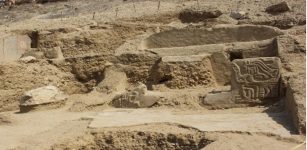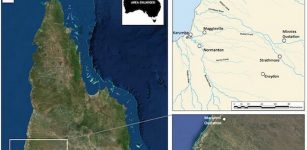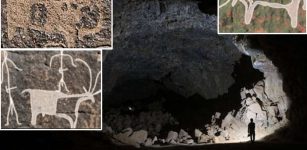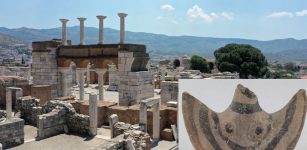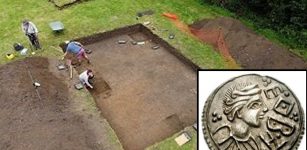New Cosmic Ray Bombardment Of The Great Pyramid – Search For The Hidden Chamber Continues
Jan Bartek – MessageToEagle.com – There will now be a new attempt to scan the Great Pyramid in Giza, Egypt.
In search of the hidden chamber, scientists will use a method called muon radiography that is similar to X-ray imaging.
Researchers from Kyushu University, Japan will bombard the Great Pyramid with cosmic rays to confirm the existence of an unknown chamber inside the famous, ancient Egyptian structure.
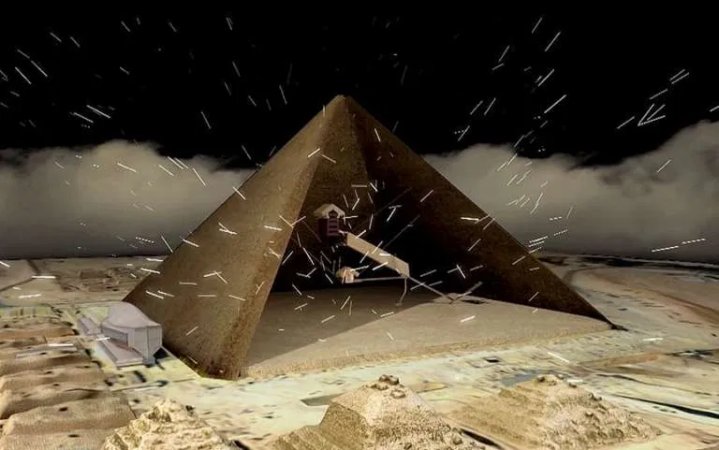
This cutaway of the Great Pyramid shows it bombarded by muons, subatomic particles that can penetrate rock. Credit: ScanPyramids Mission
In 2017, scientists announced they had discovered a mysterious, secret void inside the Great Pyramid. Researchers said they have no clue what’s hiding inside the void.
The purpose of the void remains unknown. The void is located above the “Grand Gallery”—a sloped corridor almost 50 meters long and nine meters high which links Khufu’s burial chamber at the pyramid’s center to a tunnel leading outside.
This discovery led to a scientific dispute, and it was said nothing had been found. Zahi Hawass, who at the time headed the ScanPyramids science committee overseeing the project stated that the pyramid is full of voids and that does not mean there is a secret chamber or a new discovery.
See also:
Amazing Discovery: Great Pyramid Of Giza And Its Chambers Concentrate Electromagnetic Energy
Fall Equinox Explains Unusual Alignment Of Egypt’s Great Pyramids – Engineer Says
Was There An Explosion In The Great Pyramid In Antiquity?
Kunihiro Morishima from Nagoya University in Japan explained that the void “was not known by anyone until now, from when the pyramid was built 4,500 years ago”.
“The big void is completely closed,” he added, which means anything inside it would not have been “touched by anyone after the pyramid (was) built”.
The goal of the new project is to offer evidence there is a secret chamber inside the Great Pyramid.
“The previously discovered cavity is way too large from an archaeological perspective,” said Sakuji Yoshimura, who heads the overall research project involving other universities. “We are very keen to verify the findings.”
Tadahiro Kin, an associate professor of radiation metrology at Kyushu University, and other researchers will attempt to use muon radiography to scan the enigmatic ancient structure.
A muon detector will be placed inside the Queen’s Chamber, which is located in the lower part of the giant structure.
Muons are subatomic particles generated when protons and other cosmic rays strike the atmosphere. An area about the size of a person’s palm receives a muon per second.
While muons can pass through even bedrock 1 kilometer thick, the number of muons that penetrate objects can change depending on their density and thickness.
Muons are subatomic particles generated when protons and other cosmic rays strike the atmosphere. An area about the size of a person’s palm receives a muon per second.
While muons can pass through even bedrock 1 kilometer thick, the number of muons that penetrate objects can change depending on their density and thickness.
“The technology will allow Kin’s team to measure the thickness of stone blocks used to construct the pyramid.
The accumulated data will be combined with findings from a drone survey.
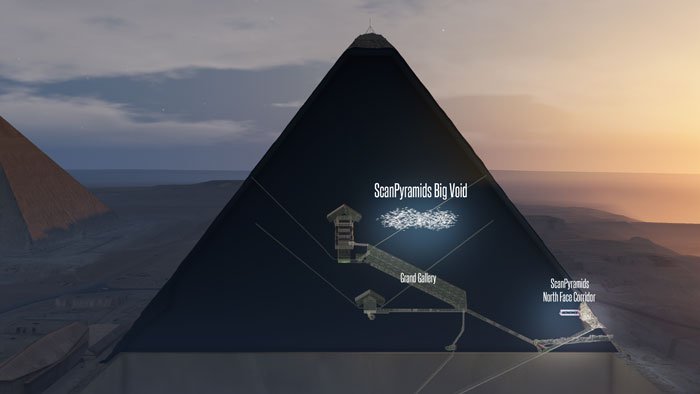
Image credit: ScanPyramids
The pyramid stands 139 meters tall and has a square base with each side measuring 230 meters. A few other chambers, such as the King’s Chamber and the Grand Gallery, are known to exist, but details of the internal construction remains a mystery,” the Asahi Shimbum reports.
In addition to Kyushu University, Tohoku University, the University of Tokyo and the Chiba Institute of Technology will be responsible for other parts of the research project under Yoshimura.
The project is due to end by this summer. The findings will be released around autumn.
Written by Jan Bartek – MessageToEagle.com – AncientPages.com Staff Writer





